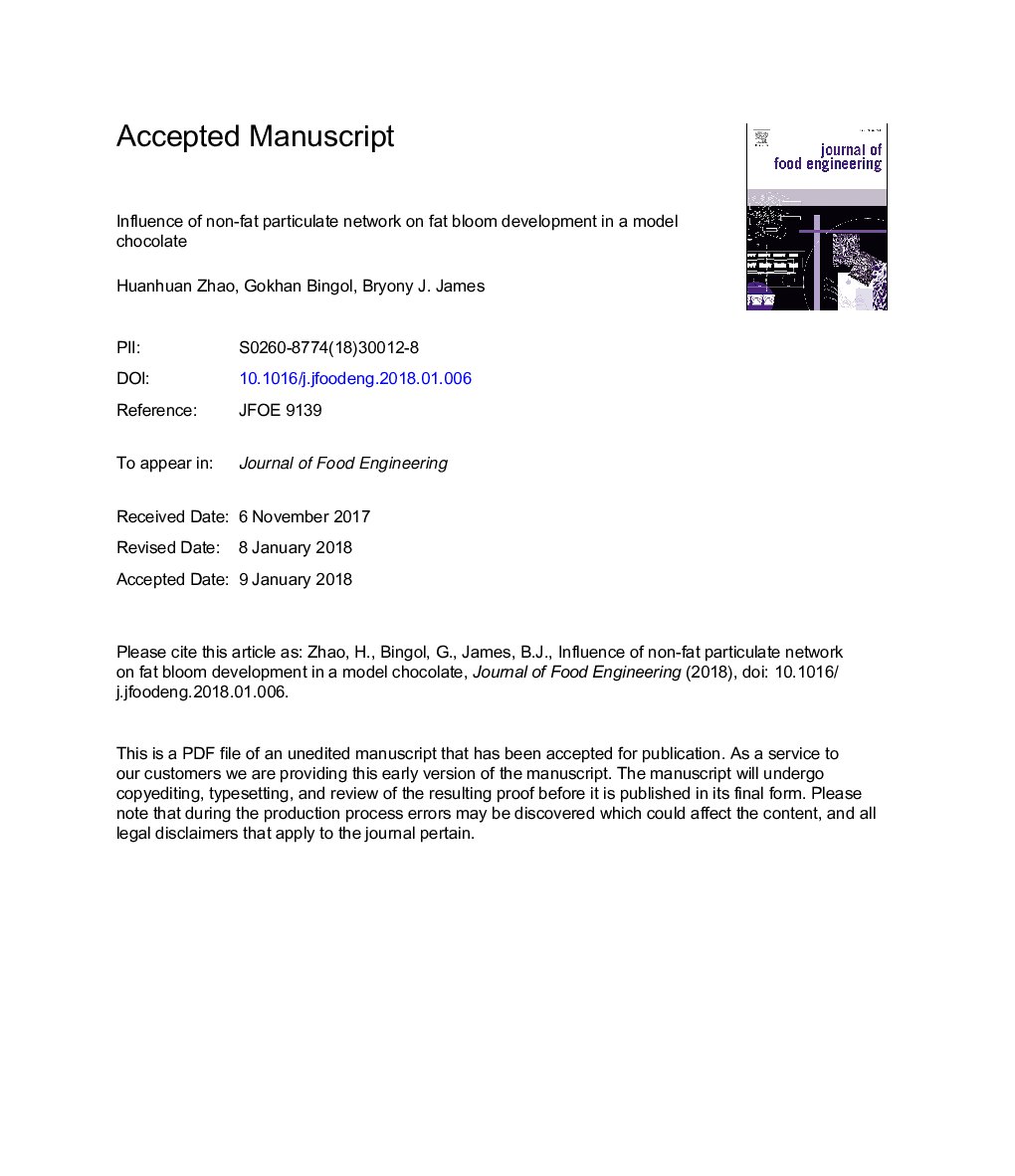| Article ID | Journal | Published Year | Pages | File Type |
|---|---|---|---|---|
| 6664652 | Journal of Food Engineering | 2018 | 20 Pages |
Abstract
Particle size effect on fat bloom formation in chocolate was studied. Model chocolates with 68% (w/w) sand particles of varying particle size distributions (D90 of 18.7, 29.3, 41.4 and 51.1â¯â¯Î¼m) were produced and stored under cycling temperatures of 20â¯Â°C (7â¯h) and 29â¯Â°C (17â¯h). Fat bloom formation was evaluated by the change of surface whiteness during 60 days' storage, whilst the associated changes of melting temperatures were determined using Differential Scanning Calorimetry. The melting temperatures increased significantly (Pâ¯<â¯.05) from 31.5 to 35.7â¯Â°C with storage time due to polymorphic transformation of fat; the increase in onset temperature indicated reduced liquid fat content which decreased the rate of bloom formation from 9 days of storage. Image analysis showed that smaller particle sizes had higher particle packing density, decreasing the radius of inter-particle channels for fat movement. Therefore, the samples with smaller particle size were more resistant to fat migration and had less changes of surface whiteness, thus bloom rate was slower.
Keywords
Related Topics
Physical Sciences and Engineering
Chemical Engineering
Chemical Engineering (General)
Authors
Huanhuan Zhao, Gokhan Bingol, Bryony J. James,
